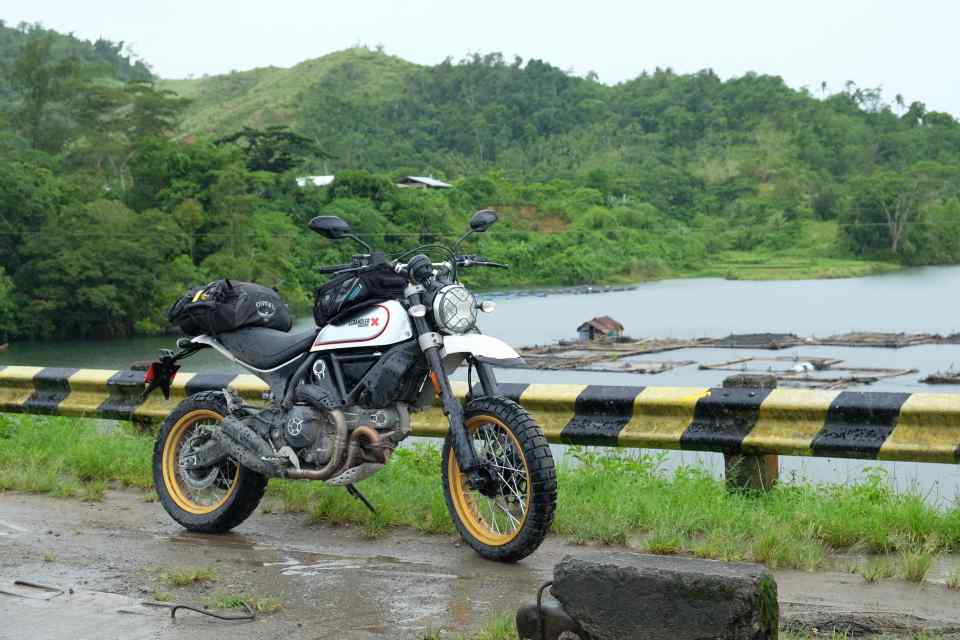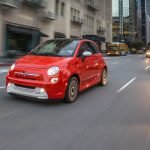
Better in worse weather
Rain had poured continuously since 4 am. Even with rain gear on, my gloves and boots were soaked to the core. It had been some of the most miserable riding conditions I’ve ever experienced. It was also one of the best long rides I’ve ever joined.

Last Independence Day weekend, a group of rider friends thought the long weekend would be the perfect time to go on a long ride. We’d ride to Dinadiawan, just north of Baler in Aurora and explore the many scenic beaches from there.

Unfortunately, the ride was plagued by the arrival of the rainy season. This left much of the road wet and slippery, some parts muddy, and the convoy difficult to keep together. For the ride, Ducati Philippines had generously loaned their latest model, the Scrambler Desert Sled. I initially thought it was a poor match given the mostly on-road conditions. Yet come inclement weather, there couldn’t be a better partner.

At the meet up, the ‘Sled drew stares from half the group that were already happy Scrambler owners. Many even remarked, “This is what the Scrambler should have been in the first place.”

More than just cosmetic variations like the Classic, Full Throttle, Sixty2, and Icon Scramblers, the Desert Sled lives up to its name with serious upgrades to the base Scrambler. The ‘Sled is an evolution of the Urban Enduro model, and as such, takes its modifications even further. It takes its name from the standard motorcycles over 500cc that were modified by riders for use in the Californian Desert with knobby tires, reinforced suspensions, spoked wheels and engine protection plates.

The changes are obvious, with the Sled being the tallest Scrambler you can buy, made taller by 19-inch front and 17-inch rear spoked wheels, a fully adjustable 46mm Kayaba front fork and rebound/preload-adjustable Kayaba rear shock, both with 7.9 inches of travel.

They’re shod on Pirelli Scorpion Rally STR tires.

To take on tougher terrain, the Sled has extra tubing on the frame for chassis stiffness, new side plates at the frame, and a longer, reinforced swingarm.

Extra touches like the headlight brush guard, front beak fender, taller handlebar, and engine mudguard help it look the part too. All told, that’s 20-kg worth of extra weight. 
It’s all still propelled by the same 803cc L-Twin paired to a 6-speed transmission.
Nonetheless, in spite of all the upgrades, the only thing that feels different about the Sled is its height and ride. Its seat height of 860mm (which can be lowered to 840mm), is manageable for most riders standing at least 5’7 and above.

Get it rolling and the larger wheels will surmount nearly anything with little trouble. The ride is a bit softer than your average Scrambler, making it great for long rides. With a 50/50 balance, it’s not likely to wheelie with some ginger throttle application, but it can get the front really light when pinned.

The taller and wider bars are a welcome addition, spreading your arms further out to balance out the extra height. Extra ribs on the grips make it easy to grab hold even with wet gloves. The foot rests also have a removable rubber sleeve, leaving just the spikes for a better grip if you intend to go off-road.
Besides that, the Sled still feels very much like any other Scrambler. The riding position is very easy to adjust to, whether you’re coming from a cruiser or sport bike.
Despite the knobby pattern, the Pirellis still return decent grip on paved and concrete roads at most speeds. It will return pretty confidence-inspiring handling when cornering in the dry, only complaining towards the upper threshold of its grip.

What makes long rides with the Sled really enjoyable are the gobs of power, reigned in by ABS fitted as standard.
The slipper clutch also came in handy in the latter hours of the ride, making shifting easy as riding fatigue begins to set in.

Despite most of our ride up dampened by rain, sweeping corners and little pockets of water were something to look forward to. I found myself giddy with excitement every time there was a road detour sign that meant a short off-road jaunt.
Come the next day, with the sky clear and the beach just a few meters away, the call of the sand was too tempting to resist. Though designed more for hard, compacted terrain, the Sled could still take on the soft sand of Baler’s beaches with some care. Its weight can be a bit of penalty on softer terrain like sand and mud. Simply keep the throttle up and keep rolling and there’s more than enough power to keep rolling.

Like the Scrambler we reviewed earlier, all of the information is displayed on the single, off-center digital multifunction gauge. there’s no fuel gauge, just a warning light once it hits the reserves. Nonetheless, average riding will net a range of at least 200-km before having to refuel.
While the original Scrambler was already easy to ride and quite flexible on a variety of surfaces, the Desert Sled takes a more specialized approach, keeping some of that on-road ability paired with more off-road fun. Its price of P805,000 is a small premium to pay over the standard Scrambler considering the extensive upgrades it comes with.
[“Source-motopinas”]





